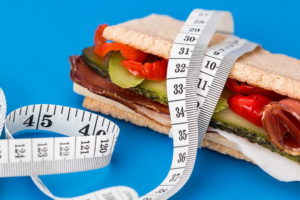
According to the statistics, nearly 70% of the US population is obese or overweight, thanks to an unhealthy eating regimen and decreased physical activities. These alarming circumstances prompted many concerned parties (nutritionists, food scientists, etc.) to come up with diet plans and routines that can limit the harmful impact of recent times by convincing people to eat healthily.
Therefore, many dieting plans and routines have been planned out in recent years and one of the popular among them is the Paleo diet. Here, we will discuss the salient features of this diet routine.
The Paleo Diet- Eating Habits Come Full Circle
The Paleo diet, referred by the terms the Stone Age diet, the Caveman diet and primal diet, is based on a simple rationale that humans should revert to the eating behavior of a caveman, the most ancient ancestor of the human race.
By adopting the eating habits of his ancestors, the modern human can get back to a healthy lifestyle which is not crammed with diseases and other physical and mental complications. Humans of the Stone Age would eat vegetables, fruits, meats and seafood and therefore the Paleo diets are also premeditated around the same eating commodities.

Photo by onephoto – yayimages.com
Scientific Rationale Given to Adopt This Diet Plan
Genetics of modern human has been evolved through the time with food items eaten by humans in his primitive phase. That’s why, to maintain the balance of health against evolutionary pressure, it is imperative to adopt the eating habits of our prehistoric forefathers.
What to Eat, what not to Eat?
Many nutritionists also call the Paleo diet a dietary routine without any carbohydrates. Because most of the food items rich in this macronutrient are not allowed to eat in this eating regimen. Let’s try to outline some of the food items that are allowed and prohibited in this diet plan.
Paleo Foods
- All type of lean meats and seafood are allowed in the Paleo diet
- Fresh organic fruits and green vegetables such as green beans, asparagus, lettuce, cabbage and broccoli can also be consumed
- Only plant-based oils such as coconut, olive and grapeseed oils can be used in the making of Paleo dishes
- Except for peanuts, all other nuts can become a part of a Paleo diet chart
Foods That Can’t be Included in a Paleo Diet Chart
- All variety of grains whether its wheat, barley or rice are not allowed to eat in the Paleo diets. A large chunk of modern foods (bread, pasta, rice dishes, cereals) are made of grains and this diet plan excludes all of them from your daily diet.
- All the vegetables rich in starch are also prohibited in the Paleo diet. For instance, potatoes and corns, a major ingredient of many recipes can’t be consumed if you are following the Paleo diet.
- All the beans and legumes, which became part of human diet just few hundred ago are also not permissible in the Paleo diet plan.
- Since caveman didn’t consume dairy products, therefore milk, yogurt, cheese and other dairy derivatives are not allowed.
- Meat with high-fat content and process food rich in Trans fats are also excluded from your diet
- Processed sugar and salty foods are also not allowed in the Paleo diet plans.
From the above-given list, it is evident that most of the food items considered Paleo foods have scientifically proven benefits for human health. But there are some foods which are healthy but still can’t be consumed in the Paleo Diet (dairy products). This is the reason why some nutritionists don’t advocate the complete adoption of this diet regimen. In the next article, we will look into the benefits and side effects associated with this diet plan.
